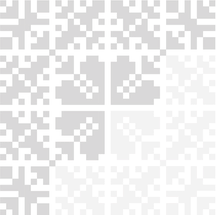C9 M3 L2 Grammar
9 | Modul 3: Gramatika
Kod doktora
9 | 3 | Lekcija 2: Doktore, pomozite!
| The verb DISATI
In the Present Tense, the verb disati (to breathe) uses a different set of endings than what its infinitive form would suggest. Initially, one would think that this is a general –ati verb, just like gledati (ja gledam), slušati (ja slučam), čitati (ja čitam), etc. That’s not the case. The verb disati (to breathe) undergoes some changes and the following endings.
DISATI | |||||
SINGULAR | PLURAL | ||||
ja | di-š-em | mi | di-š-emo | ||
ti | di-š-eš | vi | di-š-ete | ||
on/-a/-o | di-š-e | oni/-e/-a | di-š-u | ||
The reason for this irregularity within the –ati verbs is that the stem of the verb ends in –s– which means the verb has to take the endings –jem, –ješ, –je, etc. When the endings are combined with the stem, a certain sound change happens: s j = š (dis jem = disjem > dišem).
This rule applies to all the verbs in which the stem ends in the letters –s– (s j = š) or –z– (z j = ž). For example: plesati (to dance), brisati (to wipe), dizati (to lift).
plesati to dance | ja plešem, ti plešeš, on/-a pleše, mi plešemo, vi plešete, oni/-e plešu |
brisati to wipe | ja brišem, ti brišeš, on/-a briše, mi brišemo, vi brišete, oni/-e brišu |
dizati to lift | ja dižem, ti dižeš, on/-a diže, mi dižemo, vi dižete, oni/-e dižu |
| The verb KIHATI
In the present tense, just as with the verb disati, the verb kihati (to sneeze) uses a different set of endings than what its infinitive form would suggest. Initially, one would think that this is also a general –ati verb, just like gledati (ja gledam), slušati (ja slučam), čitati (ja čitam), etc. That’s not the case. The verb kihati (to breathe) undergoesthe same changes as the verb disati and has the following endings.
KIHATI | |||||
SINGULAR | PLURAL | ||||
ja | ki-š-em | mi | ki-š-emo | ||
ti | ki-š-eš | vi | ki-š-ete | ||
on/-a/-o | ki-š-e | oni/-e/-a | ki-š-u | ||
The reason for this irregularity within the –ati verbs is that the stem of the verb kihati ends in –h– which means the verb has to take the endings –jem, –ješ, –je, etc. When the endings are combined with the stem, a certain sound change happens: h j = š (kih jem = kihjem > kišem).
| The verb KAŠLJATI
The third example of irregular –ati verbs from today’s lesson is the case of the verb kašljati (to cough). The stem of this verb ends in the letter –lj– (kašlj–ati) which is one of the palatal consonants (or as I like to call them, “Croatian letters”) – č, ć, dž, đ, j, lj, nj, š, ž. When the stem of the –ati verb ends in a palatal consonant, the verb will take the endings: –em, –eš, –e, etc.
KAŠLJATI | |||||
SINGULAR | PLURAL | ||||
ja | kašlj-em | mi | kašlj-emo | ||
ti | kašlj-eš | vi | kašlj-ete | ||
on/-a/-o | kašlj-e | oni/-e/-a | kašlj-u | ||
G | 9.3 Zadatak 1. xxx |
Write the present tense form of the following verbs. Pay attention to which form you need to use.
Plesati: mi --- plešemo
Dizati: ja --- dižem
Disati: on --- diše
Kašljati: vi --- kašljete
Brisati: ona --- briše
Brijati: oni --- briju
| The Imperative of –ti verbs
The imperative mood expresses a command and personal pronouns are not used in the imperative. The Imperative is used to express commands in the second person singular (ti) and first (mi) and second (vi) persons plural. It is formed by adding a certain ending to each form. Look at the tables below. The present tense form is also given for better understanding why we form the imperative in this specific way.
STATI (to stop) | SVRATITI (to stop by) |
| Endings #1
Infinitive | GLADATI (gled–am) | KUPOVATI (kup-u-jem) |
2nd person sing. – ti | gleda–j | kup-u–j |
1st person pl. – mi | gleda–jmo | kup-u–jmo |
2nd person pl. – vi/Vi | gleda–jte | kup-u–jte |
The first type of endings is used for most regular -ti verbs (usually those ending in –ati [gledati] or –ovati [kupovati]). Compare the above present tense form with the imperative form to see the similarities within the stem of the verb.
| Endings #2
Infinitive | KUPIT (kup–im) | ŽIVJETI (živ–im) | TRČATI (trč–im) |
2nd person sing. – ti | kup–i | živ–i | trč–i |
1st person pl. – mi | kup–imo | živ–imo | trč–imo |
2nd person pl. – vi/Vi | kup–ite | živ–ite | trč–ite |
The second type of endings are used mostly for the verbs that end in –iti [kupiti], –jeti [voljeti], or certain –ati verbs that do not follow the regular ending paradigm within that group [trčati, kihati, disati]. Always think of the present tense when forming the imperative, it will help you determine what type of endings to use.
| What happens with the third person singular/plural in the Imperative?
If you think about it, we cannot actually give a direct command to him/her/them. Since a third person is not in our company we cannot express a command directly. Think of the English structure “let him eat the salad.” With this structure we are saying to someone (who is in our company) to send our message to a third person (who is not in our company) that he can eat the salad. This same notion/structure exists in Croatian as well. To form the third person singular or plural form in the imperative, we used the following structure: neka present tense of the 3rd person singular or plural.
Infinitive | Imperative 3rd person sing. | Imperative 3rd person pl. |
GLADATI (gled–am) | neka gleda | neka gledaju |
KUPOVATI (kup-u-jem) | neka kupuje | neka kupuju |
KUPITI (kup–im) | neka kupi | neka kupe |
ŽIVJETI (živ–im) | neka živi | neka žive |
TRČATI (trč–im) | neka trči | neka trče |
G | 9.3 Zadatak 1. xxx |
Write the appropriate form of the following verbs in the imperative form. Imagine that you are giving a command to your friend (i.e. you need to use 2nd person singular).
Spavati – spavaj
Kupovati – kupuj
Kupiti – kupi
Gledati – gledati
Živjeti – živi
Ljetovati – ljetuj
Trčati – trči
Plivati – plivaj
Trenirati – treniraj
Šetati – šetaj
Plesati – pleši
Dizati – diži
Disati – diši
| The Imperative for prohibiting action
The imperative in its negative form expresses the prohibition in doing something. There are two possible ways to express prohibition in Croatian. We will use the verb pričati as an example.
To express strong prohibition – use NE in front of the imperative form | |||
ja | - | mi | ne pričajmo |
ti | ne pričaj | vi | ne pričajte |
on/-a | neka ne priča | oni/-e | neka ne pričaju |
To express something between a request and prohibition. It is formed by using: nemoj, nemojmo nemojte infinitive | |||
ja | - | mi | nemojmo pričati |
ti | nemoj pričati | vi | nemojte pričati |
on/-a | - | oni/-e | - |


